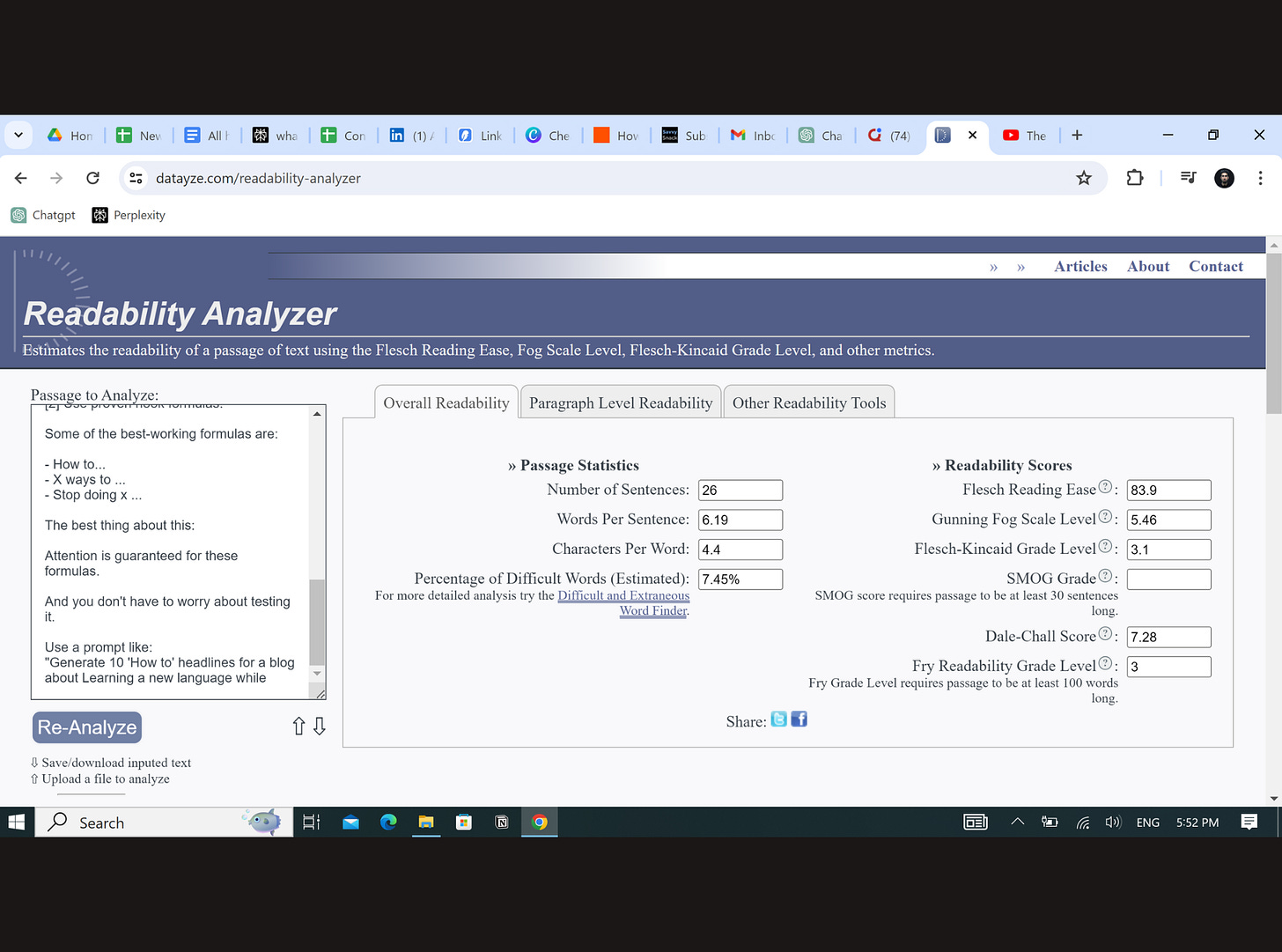When I was new to writing, I’d usually hear “Write every day.”
That’s true.
But it’s not the only thing needed to become a proficient writer. There are other factors to good writing.
Imagine you write every day. How would you know if you’re improving or not? Are people reading it?
The best place to test your writing and see if it’s doing well nowadays is social platforms.
Platforms like LinkedIn, Twitter, and Substack provide a feedback loop.
You write. You get likes and comments, and you treat that as feedback.
But to get that feedback, people should read your writing. Okay?
Let me ask you this!
How do you know your writing will perform better before you publish it to any of these platforms?
I genuinely want to know. And I’d love to hear from you in a comment.
But if you ask me this same question, I’d say I use Datayze.
An AI tool that rates your writing for how easy it is to read.
You might be thinking of Hemingway now. And that’s a great one too.
But Datayze is a little different.
It takes your writing through many analyzers and helps you understand what needs fixing.
The Language.
The words you use.
Is your writing too hard or easy to read?
It has many analyzing features.
Let me break down a few important ones for you below:
1. The Flesch score
This analyzes the number of syllables and sentence lengths to determine how easy your writing is to read.
It also shows which grade-level students can read the text. Something that Hemingway does too.
A typical readability level is 7th grade. Anything lower is easier.
When trying this tool, try to optimize for a 7th-grader or lower.
Writing for the 5th or 6th grade level is even better.
2. The Gunning Fog score
This metric does the same thing The Flesch Score does.
The only difference is that it uses a number of 3 or more syllable foggy words.
It compares those words with your writing.
It then puts the writing on a scale of 5 to 20.
Each number on the scale is at the reading level of a specific person. But to make it simple, 5 is readable and 20 is very difficult.
The ideal number is 7. A number lower than this will be easier.
If you were analyzing your writing with this metric, try not to pass 12. If you do so, your writing will become much harder to read.
3. The Flesch-Kincaid score
This shows the grade-level students who can read your writing.
According to this metric, it’s better to keep the reading level at a 6th-grade level and your writing will be readable.
On to the next…
4. The SMOG (Simple Measure of Gobbledygook) score
This metric comes from healthcare. It shows the number of years of education needed to understand your writing.
By now, you must’ve concluded that the fewer years required to understand the writing, the better it will be.
5. Dale-Chall score
Dale-Chall goes on a different path.
It compares your writing with several understandable words—which it already contains—and then decides if your writing’s readability matches them.
The words it compares with your writing are understandable by 4th graders.
So if your writing matches it, it’ll likely perform well and readers will love it.
6. Fry Readability score
This metric has two axes.
The x-axis shows the average number of syllables, and the y-axis shows the average number of sentences per hundred words.
So now what does it do with these axes?
It requires the writing to be at least 100 words. It analyzes your writing for accuracy and simplicity.
It then matches that writing with a grade level.
Remember syllables play a major role in writing.
If some words in your writing have many syllables and are hard to read, then it’s not easy to read.
But most important of all, avoid words that are hard to read/slang.
Write like you’re talking. Use easy synonyms.
PS. How do you decide whether your writing is easy or readable?
Reply to this. I genuinely want to learn from you too.
Happy Tuesday,
Sami






more 🔥 from Sami. love it. keep it going dude.
Thank you this is so good.